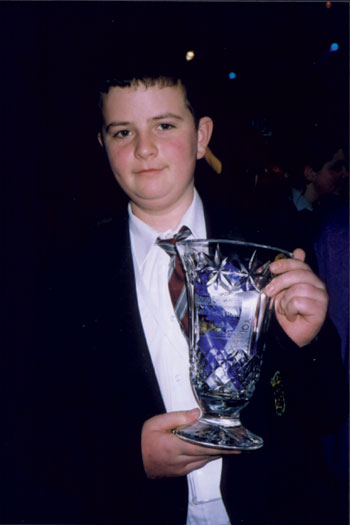| 2003 |

|
YEAR BOOK |
St Peter's College Secondary School, Wexford
|
An investigation into people's attitudes towards donating blood
|

In my project, I investigated what percentage of the population donate blood, why people do or do not donate blood, what might encourage more people to donate blood, and I tried to suggest what measures the IBTS might use to increase the number of blood donors. I carried out a survey, which I distributed to over three hundred people, and then collated the data.
The results showed that just over one third of the population (34%) give blood while another (17%) are former blood donors. The main reasons why people donate blood are because they are aware of the shortage and because they wish to help others. Donors do not mind giving blood, do not think the needle hurts, and do not feel sick or tired after giving blood. Donors generally encourage others to give blood. But 40% of those who are blood donors give blood less than once a year and more than one third of donors feel they have to wait too long in the clinics.
The reasons why people do not donate blood are because they never considered it or are afraid. Most non donors are aware of the need for blood but only half know when the mobile clinics are around. Non donors are not afraid of feeling sick or tired after donating nor are they bothered by the thought of the needle. The greatest encouragement to non donors to donate blood would be if a relative or friend needed blood.
The IBTS need to have greater publicity when the donor clinics are in town and try to decrease the waiting time. They need to encourage those who donate to do so more regularly. They could ask donors to encourage others to come along - e.g. bring a friend - and ask all recipients of blood transfusion to encourage and ask their family, friends, neighbours or workmates to seriously consider giving blood. They should also consider talking to senior students in secondary schools so they might consider donating blood when they turn 18, and ask companies to consider promoting the idea of being a blood donor among their staff.
Ciar�n Murphy entered his project in the Junior Individual Section in the Social & Behavioural Sciences Category at the Esat BT Young Scientist & Technology Exhibition in January 2003. He won a Special Award presented by the Irish Blood Transfusion Service.
His teacher was Mr Jim Doyle
|
|